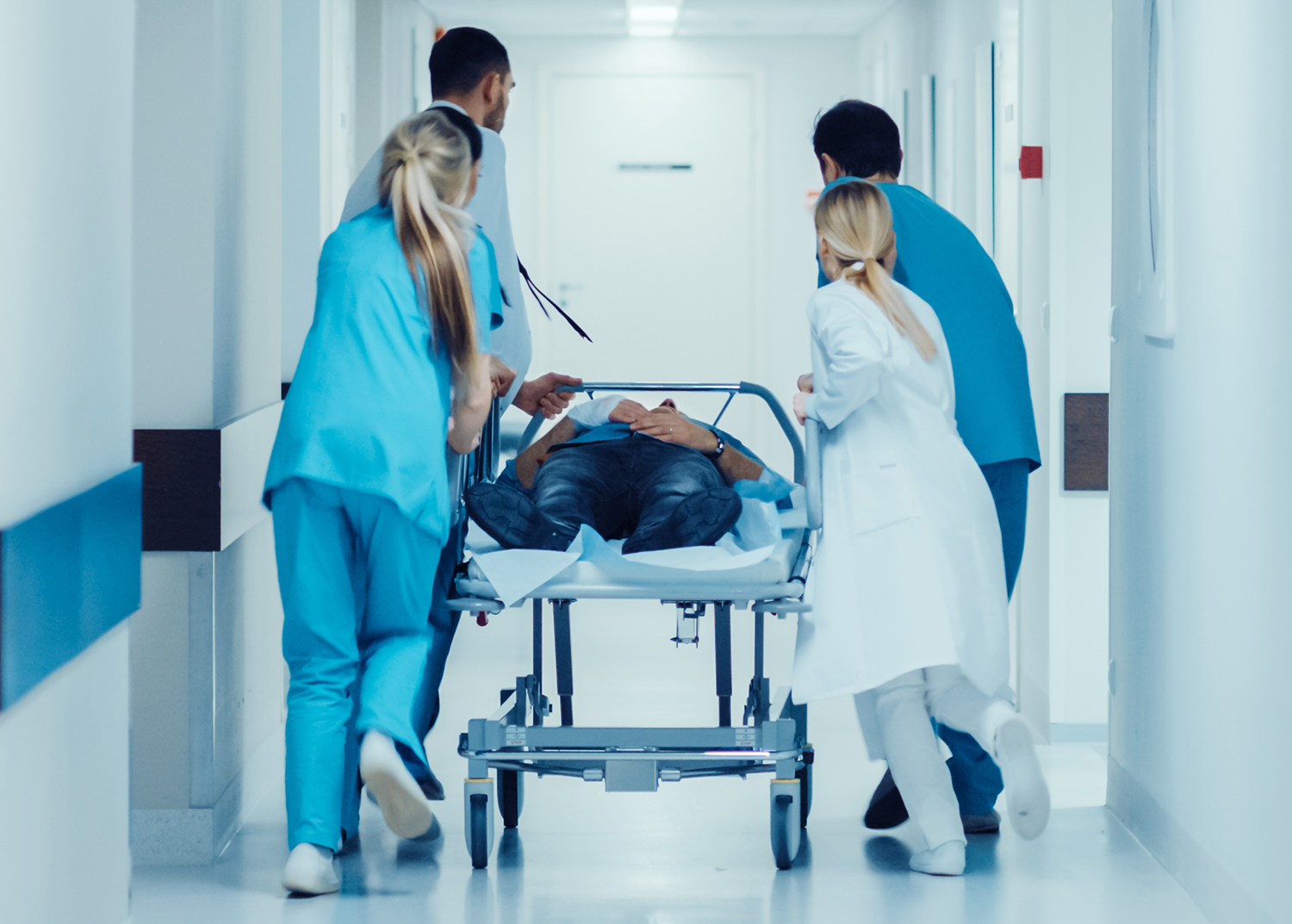
Managing the ER during COVID-19
During the early days of the pandemic, Saskatchewan emergency departments faced uncertainty—not knowing what to expect—but prepared to face the worst.
By AMANDA WORONIUKFor emergency medicine staff across the province, initial low numbers of COVID-19 positive cases gave the teams time to prepare before Saskatchewan faced any large numbers of COVID patients.
“I think there was a fair bit of anxiety because we didn’t know what to expect with the pandemic. I think that was quite common across the province,” said Dr. James Stempien (MD), who is the provincial head of emergency medicine in the University of Saskatchewan’s College of Medicine and the Saskatchewan Health Authority, and practices as an emergency medicine physician.
“The ERs made preparations, both physically (with renovations) as best as they could and with training for the expected COVID scenarios. We didn’t have high numbers initially and had time to get ready.”
Stempien oversees the emergency department leads across the province. Since the pandemic began, all Saskatchewan emergency rooms in the province have been affected, he said. Additional training and protocols were put in place early to help prepare health-care staff.
“You come into the emergency department now, everyone is wearing a mask, face-shield, and all the protective equipment. Everyone is careful, washing their hands many, many times a day,” said Stempien. “In terms of operations, we did a lot of training early on how to don personal protective equipment (PPE). All those things had to be learned again by health-care professionals who maybe needed a reminder.”
Most workplace health-care worker (HCW) exposures occur because of failure to follow infection prevention recommendations.
"A lot of simulation was done. We went over the proper way of dealing with a COVID-positive patient and the proper way of intubating (inserting a breathing tube in their trachea),” said Stempien. “With COVID, there is a certain way of doing this so health-care workers aren’t exposed.”
For USask medical students and residents, the onset of the pandemic meant their clinical learning was paused.
“Initially, when we were ramping up and we didn’t know what was going to happen, we stopped medical students from coming into the ER. That was a response by most ERs across the country,” said Stempien. “Now we have medical students and residents back in the ER, supporting the services they work with. We greatly appreciate them, and we certainly do our best to make sure they stay safe. We try not to have medical students interact with patients who are potentially COVID positive.”
While all members of the ER team don PPE before entering a patient’s room, it’s not always possible to know at time of treatment whether that patient has COVID-19. Stempien cited instances of Saskatchewan patients who come to the ER for a minor non-COVID-related trauma, are swabbed, and hospital staff later find out the test result came back positive.
An extra emphasis on hygiene, along with the stress and fatigue of working through a pandemic, has taken a toll on front-line staff. Stempien said that some of the usual stress releasors aren’t possible, including meeting up with colleagues in break rooms and sharing food. COVID-19 outbreaks have happened in other emergency departments due to exposure in break rooms and staff have to be careful.
Still, the emergency medicine teams have been supportive of each other and pulled together in this time of crisis, said Stempien, adding that he works with a “fantastic team.”
"I think through it all, emergency physicians, emergency nurses, all the health-care professionals—we are trained in the emergency department for the worst that can happen. I think everyone is responding well, going in, and doing the best work they can.”
